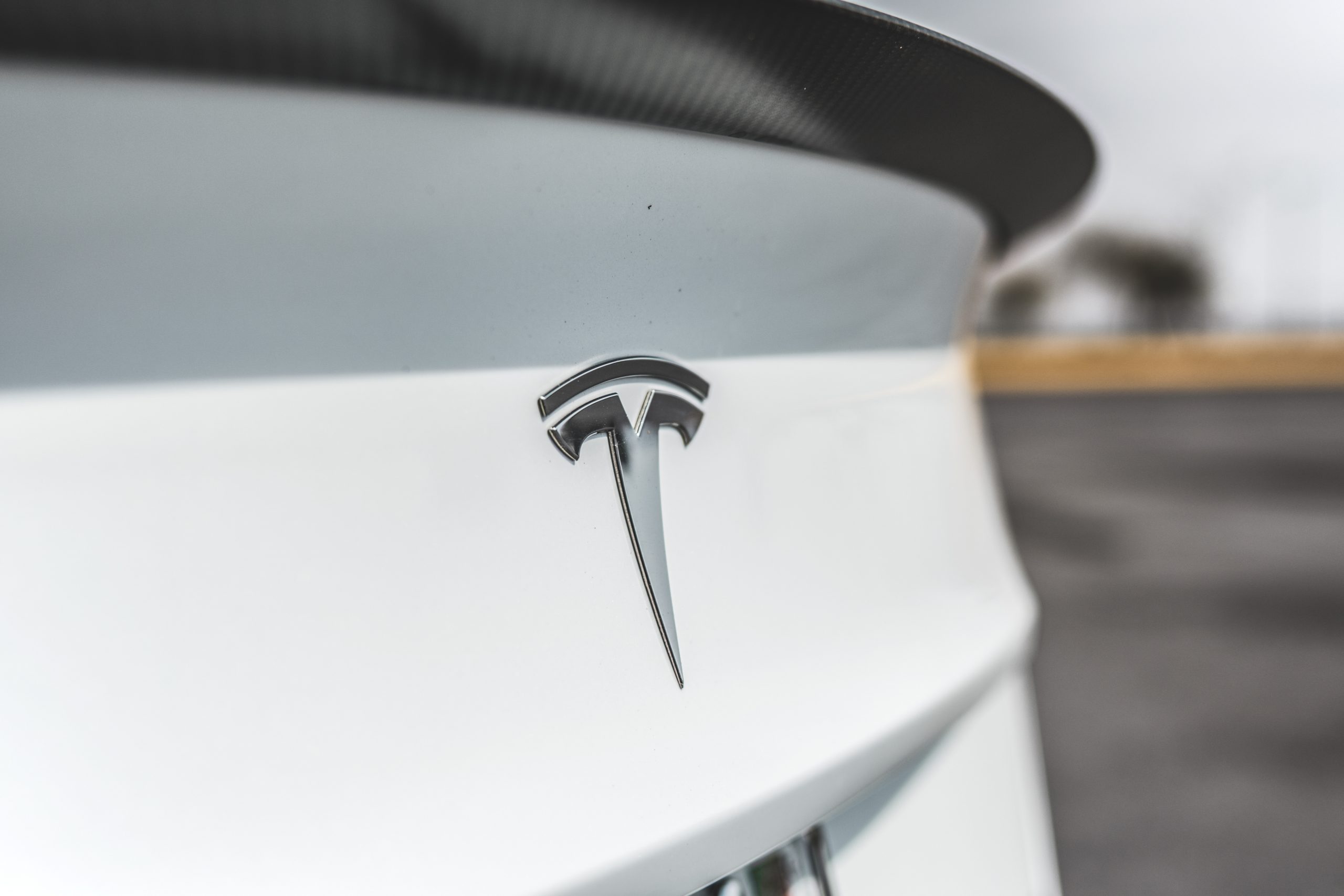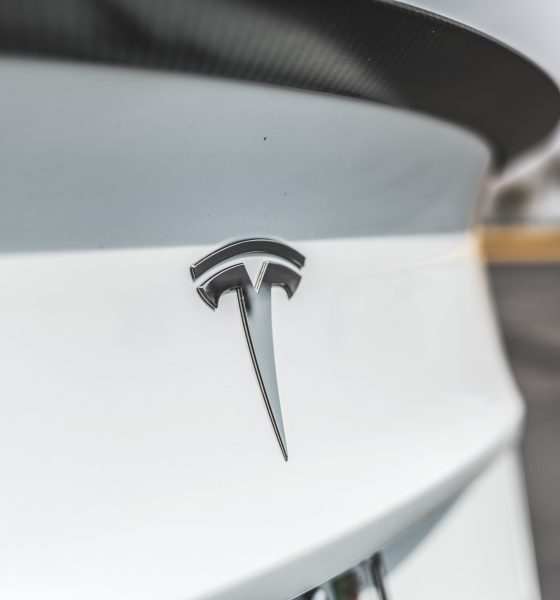

Investor's Corner
Tesla’s (TSLA) fundamental difference on Wall St., and competitors can’t keep up
Tesla has enjoyed a significant rally on Wall Street in 2020. The meteoric rise of a once-small, likely unsuccessful automotive company is truly a prime example of the American economy working to the advantage of the dreamer. At one time, Tesla was out of money and had to plead for investors to funnel in more funds to keep its doors open. Years later, the company is the hottest stock in the American economy, up 650% on the year, despite not having more than two operational car production facilities.
Some may ask: Why is this small, relatively new car company running amok in the industry? What do they have that the competitors don’t? Why is Tesla so much more appealing to investors now than any other company? There are a lot of responses that may adequately answer any of these questions. But the real answer that generally covers all of these bases is that Tesla is more about the message than the money. While the supremely high valuation spells something as large as Apple or Facebook, Tesla is leading a charge in an industry full of attractive names. The fact is, Tesla has the shiniest name of all.
Perhaps, in the field of sustainable energy companies, there may be some real players that hold significant amounts of power. But the fact is, none of the names, or Tesla, were taken seriously up until a few years ago. Sustainable energy and the idea of sourcing power from the sun, wind, and other clean outlets was not a broadly accepted idea in the United States. While wind farms and solar panels have existed all over this country, the idea of powering anything from a house to a business with something other than coal or natural gas wasn’t a big thing, especially in Pennsylvania, where I am from.
But now, the idea of having sustainable sources of energy are translating into a nationwide phenomenon. And when trends begin to turn, the investor begins to see dollar signs. The thing is this: the sustainable energy movement is here, and it’s been here, and it’s only going to get bigger. More people will begin using solar panels because they’re becoming more affordable for the average American to purchase. More people will begin driving electric cars because they are becoming more affordable, they require less maintenance, and there are more environmental advantages. This is where the industry of sustainable energy becomes more competitive, and more companies are looking for their slice of the pie.
The problem for companies that have a history of using non-sustainable products is that their name is tarnished, and it would require a new identity to expunge the investor’s mind of negative thoughts. On the other hand, the companies that don’t have that past, like Tesla, for example, bring a conditioned picture of an electric car and sustainable products to the investor’s head. And the average investor will be more prone to purchase products from an exciting and somewhat proven company than from one that is transitioning from gas to electric and basically has to reestablish itself from the ground up.
The sentiment on companies that have a sustainable name has changed. Once “dead end” companies that have exploded into real industry players, they are more appealing to the common investor. People are not thinking about their dollars right now; they’re thinking about the future. Tesla’s mission is about the future, and people are investing their money in TSLA shares because they know where the future is headed. They also know who is leading them there, and that is the company that is going to get the shares bought and see the stock price increase. Clean energy has been around for decades, but it’s always been a second-thought because gas and oil have provided jobs and economic stability. There’s no reason that the U.S. sustainable energy market can’t do the same thing, and it will if jobs are kept on American soil.
The act of having investors forget about the sustainable energy movement is over, and Tesla has essentially ended the stigma on clean energy stocks, proving they can be winners and big ones at that.
Tesla’s effort in R&D and innovation also has helped the stock price, obviously. But, the common investor is also driving up demand for the stock. That’s why TSLA’s $5 billion offering was snapped up in a matter of a day and a handful of hours.

Investor's Corner
Tesla stock closes at all-time high on heels of Robotaxi progress

Tesla stock (NASDAQ: TSLA) closed at an all-time high on Tuesday, jumping over 3 percent during the day and finishing at $489.88.
The price beats the previous record close, which was $479.86.
Shares have had a crazy year, dipping more than 40 percent from the start of the year. The stock then started to recover once again around late April, when its price started to climb back up from the low $200 level.
This week, Tesla started to climb toward its highest levels ever, as it was revealed on Sunday that the company was testing driverless Robotaxis in Austin. The spike in value pushed the company’s valuation to $1.63 trillion.
Tesla Robotaxi goes driverless as Musk confirms Safety Monitor removal testing
It is the seventh-most valuable company on the market currently, trailing Nvidia, Apple, Alphabet (Google), Microsoft, Amazon, and Meta.
Shares closed up $14.57 today, up over 3 percent.
The stock has gone through a lot this year, as previously mentioned. Shares tumbled in Q1 due to CEO Elon Musk’s involvement with the Department of Government Efficiency (DOGE), which pulled his attention away from his companies and left a major overhang on their valuations.
However, things started to rebound halfway through the year, and as the government started to phase out the $7,500 tax credit, demand spiked as consumers tried to take advantage of it.
Q3 deliveries were the highest in company history, and Tesla responded to the loss of the tax credit with the launch of the Model 3 and Model Y Standard.
Additionally, analysts have announced high expectations this week for the company on Wall Street as Robotaxi continues to be the focus. With autonomy within Tesla’s sights, things are moving in the direction of Robotaxi being a major catalyst for growth on the Street in the coming year.
Elon Musk
Tesla needs to come through on this one Robotaxi metric, analyst says
“We think the key focus from here will be how fast Tesla can scale driverless operations (including if Tesla’s approach to software/hardware allows it to scale significantly faster than competitors, as the company has argued), and on profitability.”

Tesla needs to come through on this one Robotaxi metric, Mark Delaney of Goldman Sachs says.
Tesla is in the process of rolling out its Robotaxi platform to areas outside of Austin and the California Bay Area. It has plans to launch in five additional cities, including Houston, Dallas, Miami, Las Vegas, and Phoenix.
However, the company’s expansion is not what the focus needs to be, according to Delaney. It’s the speed of deployment.
The analyst said:
“We think the key focus from here will be how fast Tesla can scale driverless operations (including if Tesla’s approach to software/hardware allows it to scale significantly faster than competitors, as the company has argued), and on profitability.”
Profitability will come as the Robotaxi fleet expands. Making that money will be dependent on when Tesla can initiate rides in more areas, giving more customers access to the program.
There are some additional things that the company needs to make happen ahead of the major Robotaxi expansion, one of those things is launching driverless rides in Austin, the first city in which it launched the program.
This week, Tesla started testing driverless Robotaxi rides in Austin, as two different Model Y units were spotted with no occupants, a huge step in the company’s plans for the ride-sharing platform.
Tesla Robotaxi goes driverless as Musk confirms Safety Monitor removal testing
CEO Elon Musk has been hoping to remove Safety Monitors from Robotaxis in Austin for several months, first mentioning the plan to have them out by the end of 2025 in September. He confirmed on Sunday that Tesla had officially removed vehicle occupants and started testing truly unsupervised rides.
Although Safety Monitors in Austin have been sitting in the passenger’s seat, they have still had the ability to override things in case of an emergency. After all, the ultimate goal was safety and avoiding any accidents or injuries.
Goldman Sachs reiterated its ‘Neutral’ rating and its $400 price target. Delaney said, “Tesla is making progress with its autonomous technology,” and recent developments make it evident that this is true.
Investor's Corner
Tesla gets bold Robotaxi prediction from Wall Street firm
Last week, Andrew Percoco took over Tesla analysis for Morgan Stanley from Adam Jonas, who covered the stock for years. Percoco seems to be less optimistic and bullish on Tesla shares, while still being fair and balanced in his analysis.

Tesla (NASDAQ: TSLA) received a bold Robotaxi prediction from Morgan Stanley, which anticipates a dramatic increase in the size of the company’s autonomous ride-hailing suite in the coming years.
Last week, Andrew Percoco took over Tesla analysis for Morgan Stanley from Adam Jonas, who covered the stock for years. Percoco seems to be less optimistic and bullish on Tesla shares, while still being fair and balanced in his analysis.
Percoco dug into the Robotaxi fleet and its expansion in the coming years in his latest note, released on Tuesday. The firm expects Tesla to increase the Robotaxi fleet size to 1,000 vehicles in 2026. However, that’s small-scale compared to what they expect from Tesla in a decade.
Tesla expands Robotaxi app access once again, this time on a global scale
By 2035, Morgan Stanley believes there will be one million Robotaxis on the road across multiple cities, a major jump and a considerable fleet size. We assume this means the fleet of vehicles Tesla will operate internally, and not including passenger-owned vehicles that could be added through software updates.
He also listed three specific catalysts that investors should pay attention to, as these will represent the company being on track to achieve its Robotaxi dreams:
- Opening Robotaxi to the public without a Safety Monitor. Timing is unclear, but it appears that Tesla is getting closer by the day.
- Improvement in safety metrics without the Safety Monitor. Tesla’s ability to improve its safety metrics as it scales miles driven without the Safety Monitor is imperative as it looks to scale in new states and cities in 2026.
- Cybercab start of production, targeted for April 2026. Tesla’s Cybercab is a purpose-built vehicle (no steering wheel or pedals, only two seats) that is expected to be produced through its state-of-the-art unboxed manufacturing process, offering further cost reductions and thus accelerating adoption over time.
Robotaxi stands to be one of Tesla’s most significant revenue contributors, especially as the company plans to continue expanding its ride-hailing service across the world in the coming years.
Its current deployment strategy is controlled and conservative to avoid any drastic and potentially program-ruining incidents.
So far, the program, which is active in Austin and the California Bay Area, has been widely successful.








